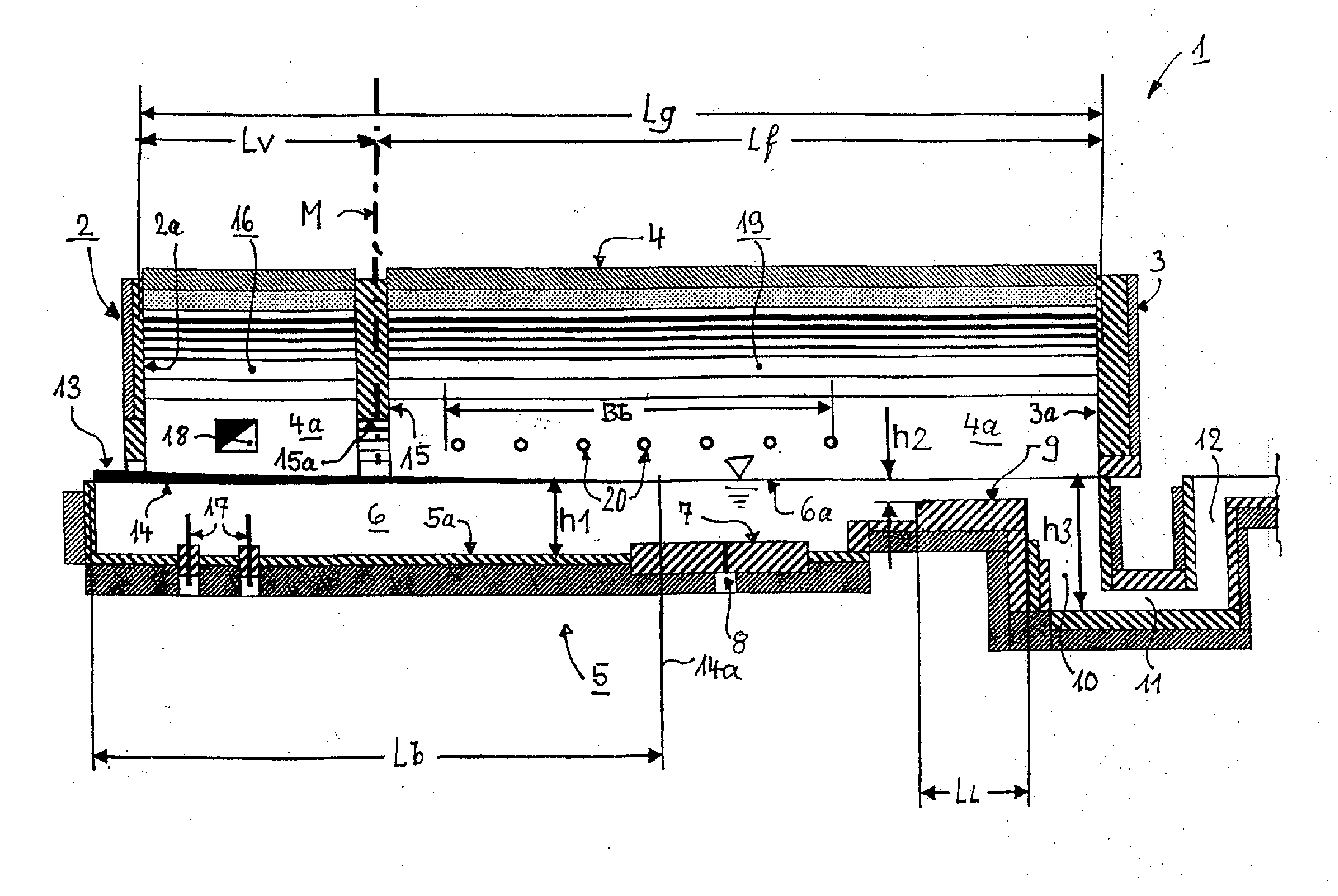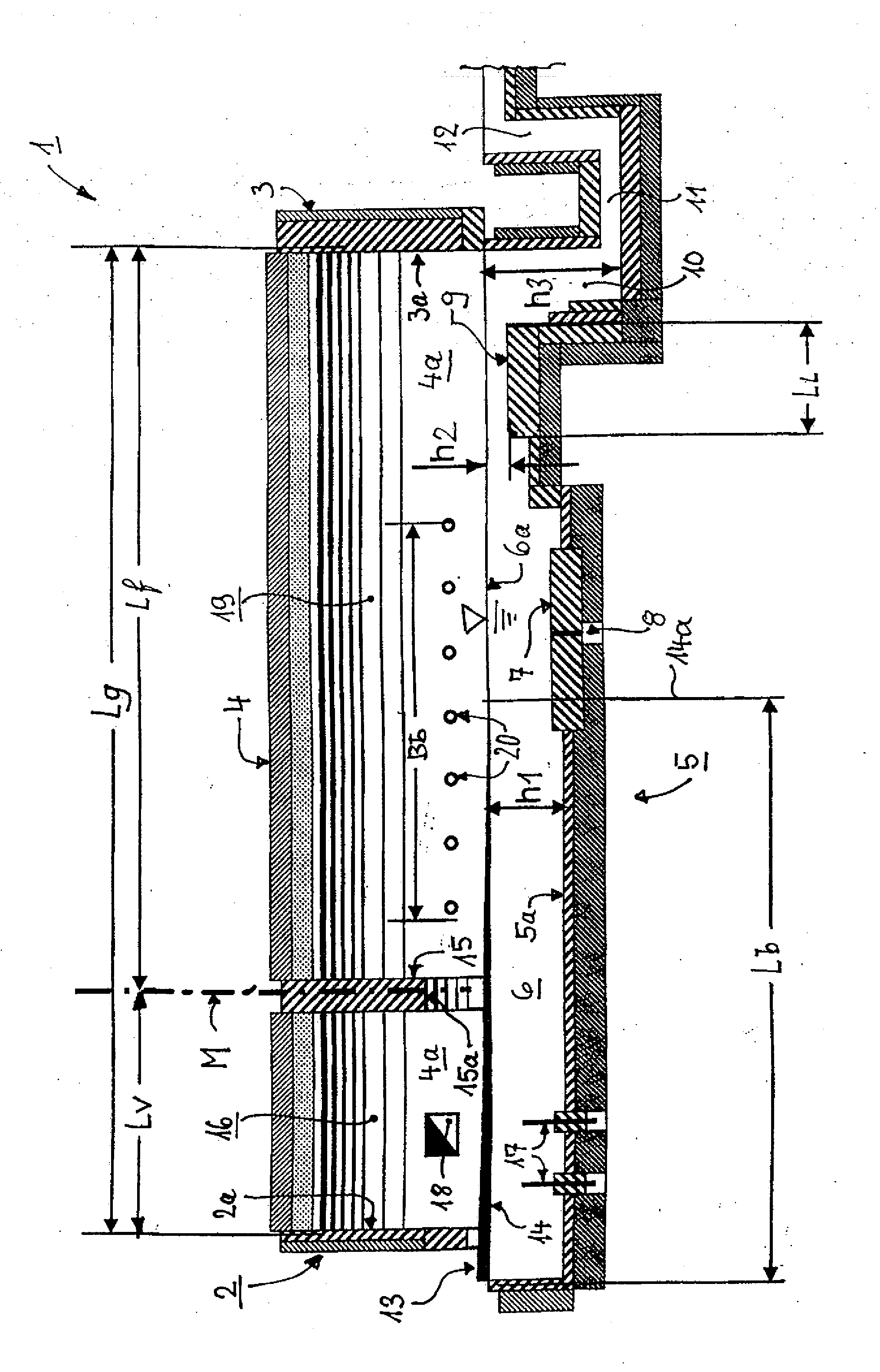Glass melting furnace and method for melting glasses
a glass melting furnace and glass technology, applied in glass furnaces, glass making apparatus, furnace types, etc., can solve the problems of unavoidable creation of oxides of nitrogen, poor heat transfer, and risk of vaporization of volatile glass components, so as to reduce flow velocity, improve heat transfer rate, and increase oxygen content
- Summary
- Abstract
- Description
- Claims
- Application Information
AI Technical Summary
Benefits of technology
Problems solved by technology
Method used
Image
Examples
Embodiment Construction
[0040]At the charging end of a superstructure 1 there is a first end wall 2 and at the extraction end there is a second end wall 3, and an arched furnace crown 4 extends between these two walls. The furnace crown 4 merges on both sides into vertical side walls 4a, of which only the rear wall is visible here. Below the superstructure 1 there is a tank 5, which is designed to hold and process a glass melt 6, the surface of which is indicated at location 6a. The tank 5 has a tank bottom 5a, from which a retaining plate 7 with a row of bubblers 8 protrudes upwards. Thereafter the tank bottom 5a is stepped up to the raised part of the bottom 9, and after this raised part of the bottom 9 there follows a homogenization zone 10, a bottom outlet 11 and a vertical channel 12.
[0041]A charging opening 13 is located below the bottom edge of the end wall 2 and above the melt surface 6a and this charging opening 13 can extend across the complete width of the tank 5. The charging material 14, intro...
PUM
| Property | Measurement | Unit |
|---|---|---|
| size | aaaaa | aaaaa |
| size | aaaaa | aaaaa |
| internal width | aaaaa | aaaaa |
Abstract
Description
Claims
Application Information
 Login to View More
Login to View More - R&D
- Intellectual Property
- Life Sciences
- Materials
- Tech Scout
- Unparalleled Data Quality
- Higher Quality Content
- 60% Fewer Hallucinations
Browse by: Latest US Patents, China's latest patents, Technical Efficacy Thesaurus, Application Domain, Technology Topic, Popular Technical Reports.
© 2025 PatSnap. All rights reserved.Legal|Privacy policy|Modern Slavery Act Transparency Statement|Sitemap|About US| Contact US: help@patsnap.com


